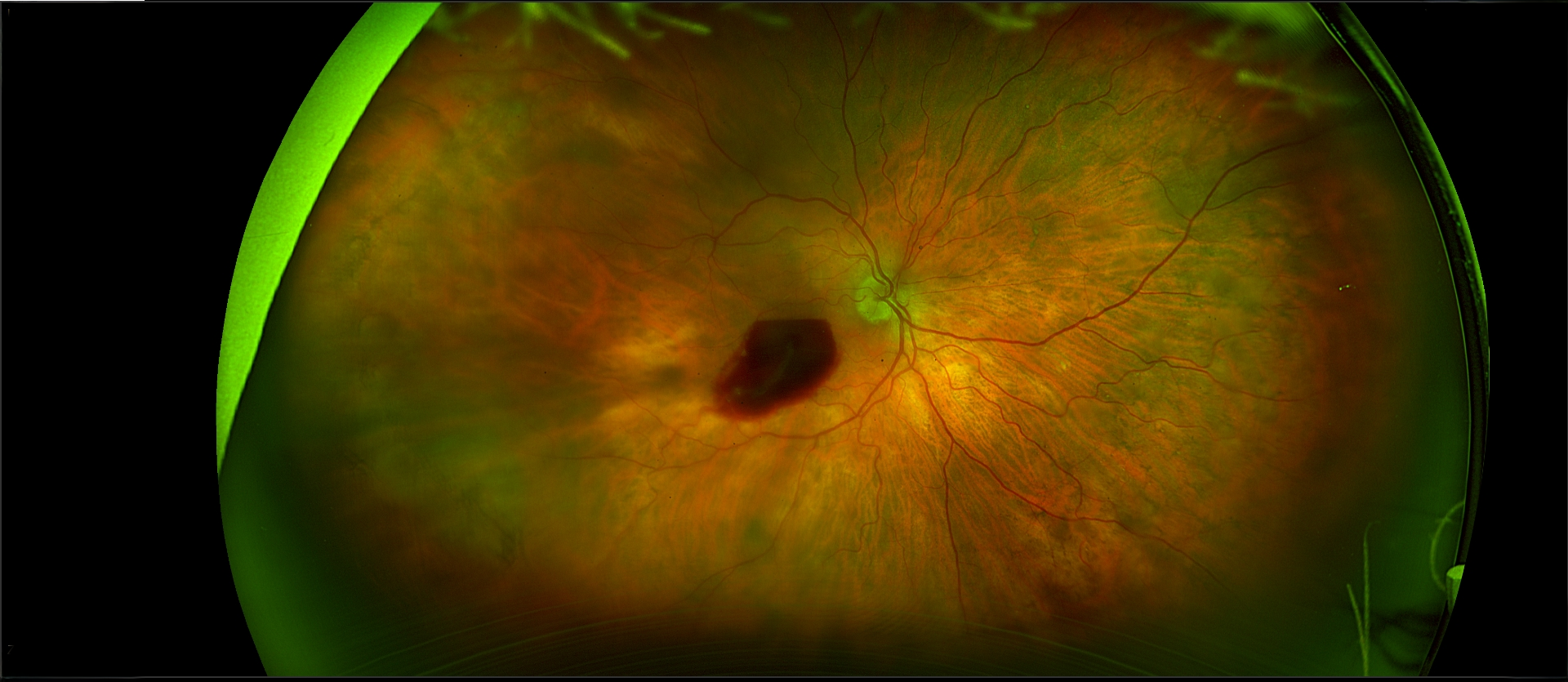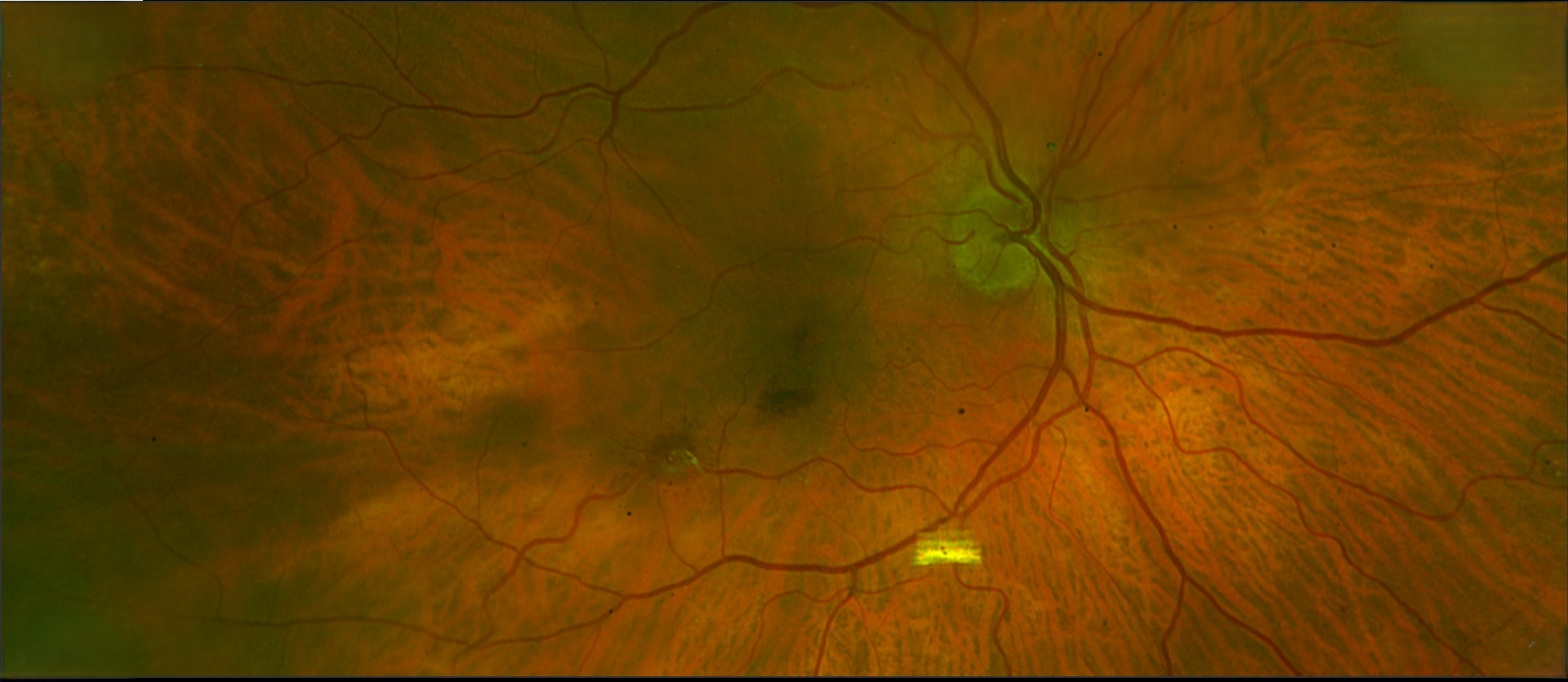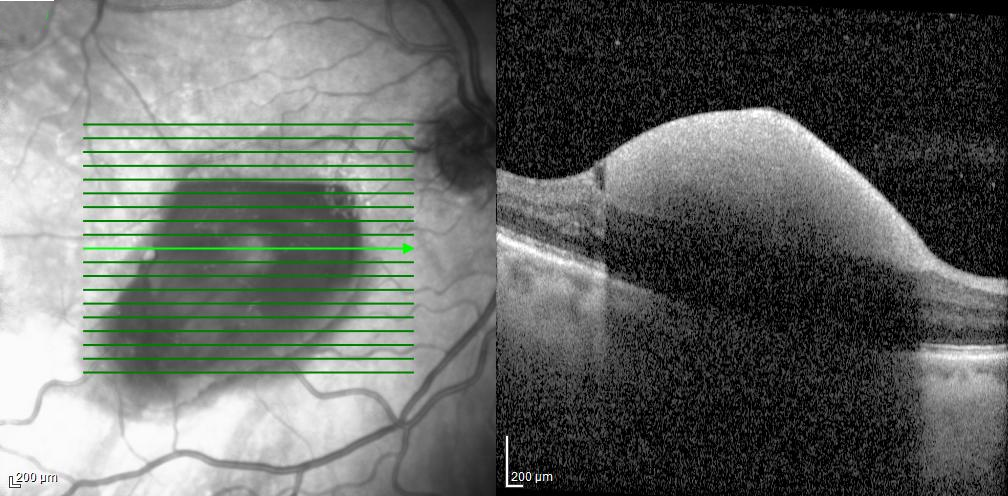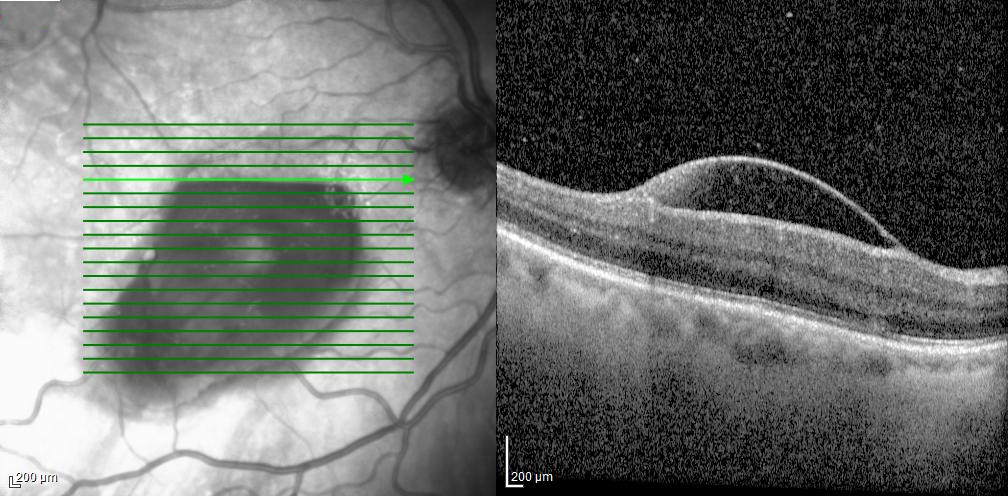The Case:
The patient was a 71-year-old woman with a sudden loss of vision in the right eye 4 days prior to our seeing her. She said that she recently had a cold and had been coughing heavily. The past medical history was unremarkable. The visual acuity was 20/200 OD and 20/40 OS. The anterior segment examination was remarkable for pseudophakia without significant capsular opacity in both eyes. The posterior segment examination was remarkable for a superficial hemorrhage in the right macula. There was no posterior vitreous detachment in the right eye. The left macula and the periphery of both eyes was unremarkable. What are the diagnostic considerations? What treatment, if any, would you recommend?







